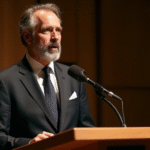Introduction to the INE’s Voter Turnout Estimation Plan
The National Electoral Institute (INE) has announced that they will estimate voter turnout for the upcoming judicial election on June 1st using a sample of 1,644 polling stations (2% of the total).
The Importance of Estimating Voter Turnout
As part of citizens’ rights, the INE aims to know the level of participation on the same night of the election. This will be achieved through a statistical exercise to estimate and share the citizen participation level reached during the electoral day, adhering to principles of certainty, legality, independence, impartiality, objectivity, and maximum publicity.
Experts Collaborating on the Estimation Process
Two statistics specialists, Dr. Michelle Anzarut Chacalo and Dr. Luis Felipe González Pérez, will collaborate with the INE to design the sampling scheme, establish estimation models, select the sample, and perform estimations on election night.
The sampling design must ensure at least 95% confidence and a minimum error margin. It will be based on the approved Nominal List.
Comparison with Previous Processes
The INE’s plan for estimating citizen participation in the extraordinary federal judicial power election on June 1, 2025, mentions using a sampling scheme similar to the consultation (7% participation) or revocation of mandate (18% participation).
“The total number of polling stations and their distribution by section is not very different from this process, so these examples serve as a reference,” explained a consejero.
Mixed Reactions from Consejeros
Growing Interest in Participation Data
Consejero Jorge Montaño acknowledged the increasing interest from citizens to know the percentage of voters participating in this electoral process. He emphasized the importance of sharing these data promptly during the election day.
Consejera Carla Humphrey celebrated this mechanism but expressed concern that this decision arrived seven days before the election, not previously planned in the approved schedule and budget for this electoral process.
“I deeply regret that the path chosen for such crucial determinations, especially in this manner, highlights the exclusion of certain areas and leaves them without capacity to operate or voice within technical areas, who often learn about projects only after they have been circulated to working groups or even committees,” she stated.
Respecting the Electoral Silence Period
In a separate matter, INE consejeros reminded everyone that the electoral silence period begins at the first minute of Thursday, May 29th, following the conclusion of judicial campaigns. Any promotion or diffusion of candidates will be prohibited during this period.
In response to queries from several candidates, including Paula María García Villegas Sánchez Cordero, who sought permission to attend a recognition ceremony on May 29, 2025, coinciding with the electoral silence period. The INE clarified that they neither grant nor deny attendance permissions for events.
However, the mere image of a candidacy constitutes propaganda, and citizens must respect the silence period to reason their vote. Candidates are urged to refrain from making statements that disrupt the electoral silence.
Key Questions and Answers
- What is the INE estimating? The INE is estimating voter turnout for the judicial election on June 1st using a sample of 1,644 polling stations.
- Who is helping with the estimation process? Statistics specialists Dr. Michelle Anzarut Chacalo and Dr. Luis Felipe González Pérez are collaborating with the INE.
- What sampling scheme will be used? A sampling scheme similar to previous consultations (7% participation) or revocation of mandate (18% participation) will be employed.
- When does the electoral silence period begin? The electoral silence period begins at the first minute of Thursday, May 29th.
- Can candidates attend events during the silence period? No, candidates must respect the silence period and refrain from making statements that disrupt it.






